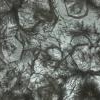I tried searching on google various terms. But, every site is about keeping them alive for bait. Almost nothing about actually raising them.
I got a small school of Minnows (5 of them) today and only know a little.
They like cooler water (the water I got them in was pretty cool), like to hide, lay eggs everywhere, will eat fish food and brine shrimp. Though one site said I should have a heater, but everywhere else said its better to keep them in cooler temperatures and their water at the river was kind of cold anyway.
Water isn't a problem, as I'll just replace their water with the river water they were in with a mix of the filtered water I have. So, chemicals and stuff aren't an issue.
Anything else I should know about raising them? Or are they pretty easy to raise overall?
Also, mine look almost exactly like the one shown here. Though one of them is a lot darker colored, almost bluish/back and he/she was swimming in the same school. All of them have rather big eyes. And all but the darker one, you can see through their body and see their insides.
http://www.mysananto...ist-5669596.php
But that is in Texas so I doubt the same species, and the only protected Minnows as far as I can tell on google are up in northern California. And to be honest, mine do look quite similar to the protected Delta Smelt along with a bit of that Texas minnow one. But, those are way up in Northern California and the other one is way out in Texas.
Hopefully mine isn't one of those protected variety and the more typical ones people raise (I guess for bait, because that is the only thing I see on google that they are raised for) lol.
I'll definitely "attempt" to take pictures of them, but I'm going to wait as I don't want to stress them out. I think taking pictures will be hard though, as any time I lift up the towel, they hide and are hard to find. And, they move really fast.
Edited by Vendayn, July 31 2015 - 1:50 PM.



















